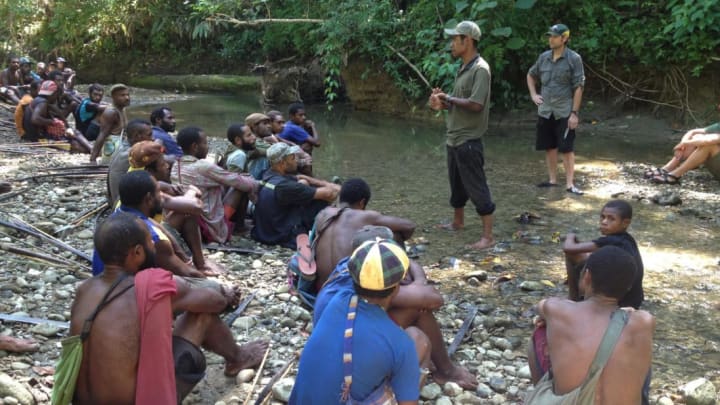Tsunamis and other natural disasters have taken a deadly toll on human populations for millennia, and now we may have the oldest example of that truth yet. An international team of anthropologists and environmental researchers recently analyzed a cracked skull that belonged to a person who likely died in a tsunami some 6000 years ago. They detail their find in a new study published in PLOS One.
The partial skull in question, known as the Aitape skull, was found in Papua New Guinea in 1929 during a geological survey by an Australian scientist named Paul Hossfield. It has since been dated to the mid-Holocene epoch, or around 6000 years ago.
For the current study, the scientists returned to the site of the 1929 discovery to sample and analyze the sediment there to find out more about what might have killed the person millennia ago. They had only Hossfield's basic field descriptions to go on, but University of Notre Dame anthropologist Mark Golitko, one of the study’s authors, says that based on those descriptions, they think they were able to sample within 100 yards or so of the skull's original location.

Based on the grain size, chemical signature, and marine microalgae found within the sediment samples, they were able to determine that around the time that the skull was buried, the area was inundated with water, probably from a tsunami. At that time, the site, located near the present-day town of Aitape, would have been just along the shoreline. Aitape was also the site of a devastating tsunami in 1998, and the Holocene sediments resembled the ones associated with that disaster.
It's possible that the skull was buried before the tsunami hit, and the grave was ripped apart by the waters and the rest of the bones scattered. However, during the powerful 1998 tsunami that killed more than 2100 people in Papua New Guinea, bodies buried in modern cemeteries were not uprooted even as the sediment above them washed away, making it more likely that the ancient skull belonged to someone killed in the disaster.
The new analysis has "made us realize that human populations in this area have been affected by these massive inundations for thousands of years," study co-author James Goff of the University of New South Wales said in a press statement. "Given the evidence we have in hand, we are more convinced than before that this person was either violently killed by a tsunami, or had their grave ripped open by one."
Field Museum anthropologist John Terrell, another co-author of the study, said, "If we are right about how this person had died thousands of years ago, we have dramatic proof that living by the sea isn't always a life of beautiful golden sunsets and great surfing conditions."
